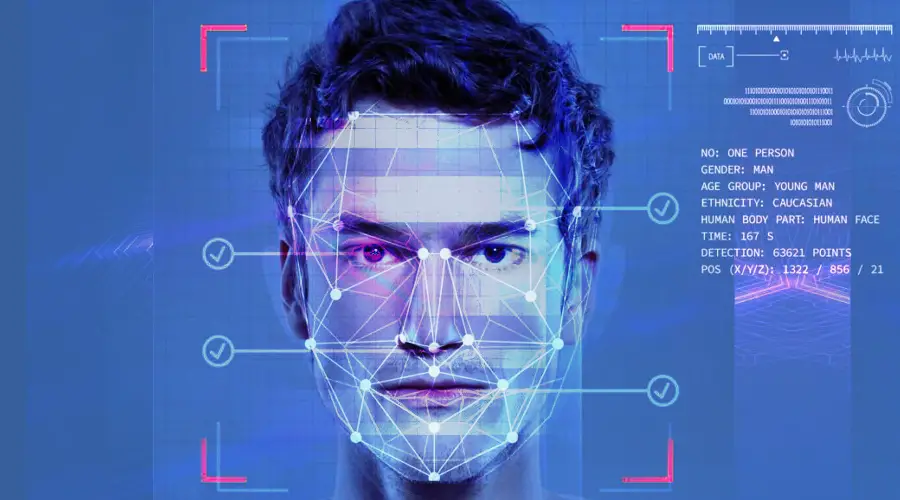Communicating the ethics in video analytics technology
Media reporting and social media gossip about Artificial Intelligence (AI) lends itself to the sensational. The extreme and the fearsome. So it’s not just important to build strong regulatory frameworks to guide industry development, it’s important to communicate how technological innovation can actually be a force for good too.
Like most AI-based sectors, video analytics technology finds itself in a similar position – needing to educate stakeholders about both the safeguards in place to ensure ethically-sound progress, as well as how its capabilities can drive positive change.
This concept was explored as part of the Q&A component of an expert panel at Sydney’s 2023 Security Exhibition & Conference, titled Using Artificial Intelligence to solve real-world customer challenges. Chaired by Editor of Security Solutions Media, John Bigelow, here’s how the discussion unfolded:
John Bigelow, Editor at Security Solutions Media
So this is the part of the discussion where we get to now throw it over to you. You’ve sat here for a reason, to listen to these people talk about Artificial Intelligence and understanding how it can be used in real-world applications to solve genuine customer problems. So has anyone got questions? Are there things that you would like to ask the panel about Artificial Intelligence and how it can be used in security applications today — and maybe even [in] a year or two from now?
Audience Member
Thank you. I’m from the city of Perth. We deployed facial recognition a couple of years ago, as a trial through the Smart Cities project. But the trial was [only] six months. W Police was not interested in implementing that solution because of the reaction from the community. So how are we going to please the community and [get] organization support [for] AI? [The] community [doesn’t seem like it] is in favor of facial recognition at all. Thank you.
A changing landscape: Trial by media
Aaron Terrey, Director of Vixles Pty Ltd
Yeah, it’s a challenge. And look, as I said, I put facial recognition into a retailer in Australia six years ago. And, it actually came out in the press that this retailer was using that at the time, and the public reaction was almost non-existent. Since then, there’s been a facial recognition operator — not in Australia, thankfully, but in the States — that was involved in scraping Facebook for faces and using that as training data unethically. You probably all know about it, it was well-publicized at the time. That put a really black mark on the whole facial recognition side. We’re working very, very hard at the moment to try and convey the message back through channels and through media that, provided this is used ethically and responsibly — and not [for] unnecessarily collecting data on people that it shouldn’t be, or storing data for any significant period of time, if at all — then that should change the narrative.
Aaron Terrey
I think the disappointing thing is we do use facial recognition all the time, right? So if you’ve got a banking app, and you’ve elected to continue to use your pin, and you’ve got a four digit PIN, a computer can hack a four digit PIN in under five seconds. Six digits [can be hacked] in 30 seconds. Whereas facial recognition – which we’re probably all using on our devices for our banking, or certainly to open our phone – is significantly more accurate. So it’s a challenge.
Gathering and keeping the right information, in the right way
Aaron Terrey
What I would say in terms of law enforcement and councils with facial recognition is you need to be very specific about where the initial information has come from. So what are you trying to look for? When you populate a database, so that you’ve got people in there for whatever reason that you want to [trigger] alert[s] [about]. You know, in South Australia, we talked about people that gave consent to [self-exclude from gaming establishments]. No other people should be in that database. If this is a law enforcement thing, what right do you have, legally, to have a database full of images of people? I think that’s the area that’s got to be understood. So gathering the right information, ensuring that you haven’t got it off Facebook or social media. If it’s a law enforcement piece, [check] that it’s come from the source and from the VMS. And then, what purpose you’re using it for, and [then] make sure the data is deleted straight away.
Communicate purpose transparently
Aaron Terrey
It came out recently that I think 17 or 18 stadiums [were using facial recognition]. And the question was raised: Why are we using facial recognition? And where’s our data going? I think that significantly needs to be answered. There should be full transparency back to the public. And the data of us, as individuals, is not recorded and used for any marketing purposes. So you’ve got a challenge, but we’re trying to work through the media and trying to work and lift the bar.
Patrick Elliott, CEO and Cofounder at VisualCortex
Can I just say, there’s, again, the other side of the coin… So you could say facial rec, we’re going to capture everybody’s face and retain the data. And again, I’ll go back to [the fact that] as a company we don’t do it, but you could… just have the faces of the known offenders that we really need to keep out of our venue or store. Then, if you’re doing a live comparison of those against people coming in, then you’re not retaining everybody else’s data. So don’t retain the images of the general public; only retain the images of those that you need, and then do a comparison and then trigger the alarms. I think typical citizens, when they understand and it’s clearly communicated why we’re doing it, I think the majority will get along about it.
Stamping out misinformation
Aaron Terrey
It came out recently that I think 17 or 18 stadiums [were using facial recognition]. And the question was raised: Why are we using facial recognition? And where’s our data going? I think that significantly needs to be answered. There should be full transparency back to the public. And the data of us, as individuals, is not recorded and used for any marketing purposes. So you’ve got a challenge, but we’re trying to work through the media and trying to work and lift the bar.
Patrick Elliott, CEO and Cofounder at VisualCortex
Can I just say, there’s, again, the other side of the coin… So you could say facial rec, we’re going to capture everybody’s face and retain the data. And again, I’ll go back to [the fact that] as a company we don’t do it, but you could… just have the faces of the known offenders that we really need to keep out of our venue or store. Then, if you’re doing a live comparison of those against people coming in, then you’re not retaining everybody else’s data. So don’t retain the images of the general public; only retain the images of those that you need, and then do a comparison and then trigger the alarms. I think typical citizens, when they understand and it’s clearly communicated why we’re doing it, I think the majority will get along about it.
Ethical reporting of AI-related concerns by the media
John Bigelow
And I think the other important piece of that, too, is that there needs to be ethical reporting from the media about what is actually going on, and what’s real. And they need to stop reporting poop, basically, because we don’t have facial prints. They’re mathematical algorithms that identify nothing; they can’t be reverse engineered. They can’t be reconstructed. We’ve just got to stop reporting garbage.
Aaron Terrey
Can I just say too, if facial recognition is a problem, there’s other technologies, like Patrick’s working with, where he says he doesn’t use facial recognition or biometric data. And you can still get a lot of value from that. I think that’s another direction you could potentially hit as well…
Patrick Elliott
So attribute analysis, so basically, what color pants, what color clothing — hat, glasses… So, I mean, at the end of the day, I still think the authorities have to make it back to that human call. But, if you can help them narrow the search [that’s where the value lies]. So if you’re looking for somebody, and rather than taking 10 hours to look for somebody, it takes you 30 seconds, you’re not violating people’s privacy but you are helping accelerate the investigation. So there are other ways to do it.
Where to next?
Keen to hear more? Check out the full panel discussion – Using Artificial Intelligence to solve real-world customer challenges – here: https://visualcortex.com/2023/11/29/solving-real-world-challenges-with-video-analytics-software/
About VisualCortex
VisualCortex is making video data actionable in the enterprise. Its Video Intelligence Platform provides the stability and flexibility to productionize computer vision technology at scale. Able to be used for any video analytics use case in any industry, VisualCortex’s production-ready cloud-based environment transforms video assets into analyzable streams of data.
The VisualCortex platform delivers the artificial intelligence smarts, governance and usability, enabling organizations to connect any number of video streams, repositories and use existing commodity hardware. An intuitive user interface, out-of-the-box reporting, range of configurations and integrations empower non-technical people to produce, analyze and act on insights derived from computer vision throughout the enterprise. Organizations can easily combine these AI-generated video insights with other data sources and systems to facilitate both real-time operations and strategic analysis. The VisualCortex Model Store also provides a secure marketplace for customers, partners and independent machine learning experts to share quality controlled computer vision models.
For more information, visit www.visualcortex.com
For regular updates, follow VisualCortex on Twitter (@VisualCortexApp), LinkedIn (VisualCortex), YouTube (VisualCortex) and Facebook (@VisualCortexApp).
For regular industry news and analysis, subscribe to VisualCortex’s mailing list here: visualcortex.com/contact-us








